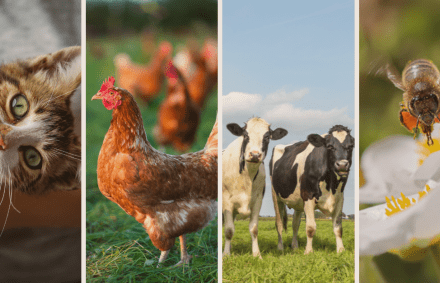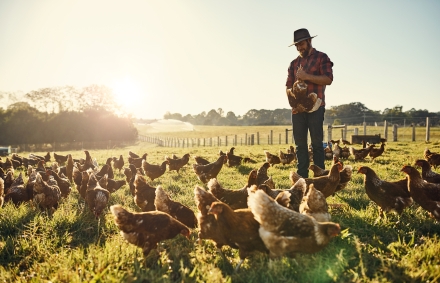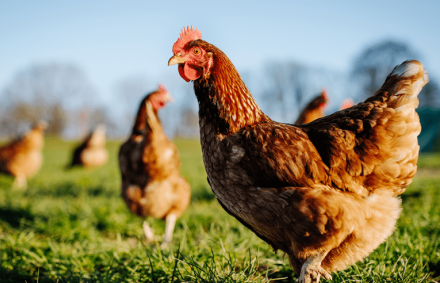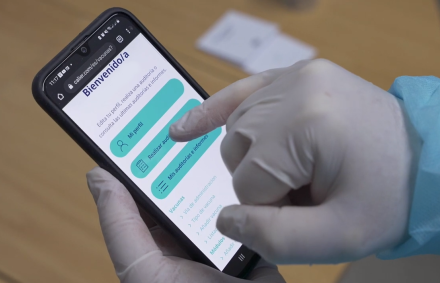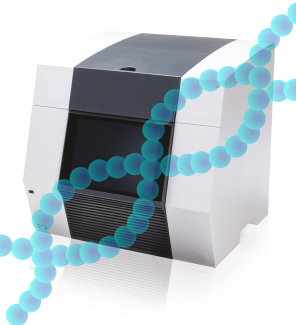
The new techniques developed for the diagnosis of salmonellosis in poultry include a wide variety of systems and processes that have succeeded in accurately determining the species involved in salmonella infections and differentiating between field strains and vaccine strains.
There are semi-automated systems, kits based on biochemical characteristics and sensitivities/resistance to certain antibiotics, immunological techniques, serological methods, etc. Among all of them, those on which we are working with greater intensity, owing to their great potential to overcome the limitations of traditional techniques, are the so-called molecular biology techniques, and principally those based on the polymerase chain reaction (PCR).
Salmonellosis is one of the zoonoses that has the greatest impact on human health, causing gastrointestinal processes that can be of different degrees of severity, and may cause severe problems in infected people. The infection is usually caused by the consumption of foods of animal origin and especially by the consumption of consumption of contaminated and improperly cooked eggs and poultry meat.
To reduce the prevalence of salmonellosis in poultry as far as possible, and thereby the subsequent transmission to people, the European Union established guidelines for the control of the disease that later gave rise to the National Salmonella Control Programmes (NSCP) setting out all the measures aimed at reducing Salmonella in poultry.
Worthy of mention among the prophylaxis measures included in these programmes is the vaccination of laying hens. This vaccination was initially implemented during the rearing period, but as of this year, European Medicines Agencies have also authorised the use of the Primun Salmonella E vaccine from Calier during the laying period. This is a live attenuated salmonella enteritidis vaccine, which is the most important salmonella strain infecting laying and breeding hens, and whose administration via the drinking water on farms leads to immunisation of the animals.
Salmonella in poultry is currently diagnosed using a methodology based on the ISO 6579 standard, consisting of analysing the various samples using different culture media to isolate and later identify the salmonella strain. This analytical procedure has several limitations:
- The need for several days to complete the entire process.
- The results offered are purely qualitative, without the option of working on a quantitative level.
To address these drawbacks, the focus in recent years has been on the development of alternative techniques that provide results in a shorter period of time, and also allow quantification to improve the reliability of analysis and decision making.
In addition to detecting the presence of salmonella in the different samples analysed, and taking into account that the animals are vaccinated against avian salmonellosis, a highly necessary aspect of the analytical techniques is that they allow us to differentiate between wild or field strains and vaccine strains. This is very important because, in the case of salmonella-positive samples, we would be able ascertain in a short time whether we are dealing with a pathogenic strain or the one that is in the corresponding vaccine.
PCR diagnostics offer numerous advantages over other techniques, the most important of which are:
- Greater sensitivity (being able to differentiate between different bacterial strains at the molecular level)
- Faster results, which is very important, particularly for high impact actions for farms where samples are taken under the National Salmonella Control Programmes.
PCR techniques have evolved from traditional PCR to Real Time PCR (RT). Real-time PCR is currently the most widely used PCR for the diagnosis of many important diseases in animal health. In contrast to the traditional PCR, where only qualitative work is performed and other techniques (e.g. electrophoresis) need to be coupled to obtain results, the real-time PCR allows for continuous monitoring and quantification of data, without any further treatment.

One of the main applications of this technique in the diagnosis of salmonellosis in poultry is the possibility of differentiating between strains present in the different licensed vaccines, such as the Primun Salmonella E vaccine against salmonella enteritidis and field strains.
Based on this technology, different DIVA (Differentiating Infected from Vaccinated Animals) diagnostic tests are being developed which, in addition to this differentiation between vaccine and field strains, also allows us to perform excretion controls of the vaccine strains, as well as to detect their presence in different types of samples. All this is of enormous help to keep track of vaccinations carried out on farms.
The continuous advancement and development of these molecular biology techniques will provide tools that will be of great assistance in everything related to the diagnosis of salmonellosis in poultry, as well as in other important pathologies in poultry farming.
Traditional PCR-electrophoresis gel
Real time PCR (RT-PCR)
Calier is working precisely on the development of these diagnostic techniques. The technique itself, as well as the use of transport formats (FTA cards), will make it possible to speed up diagnosis and to employ the most accurate techniques, both for the identification of Salmonella species and for the differentiation between vaccine strains and field strains.
The possibility of differentiation is in accordance with the directives expressed in the national salmonella control programmes, which require attenuated vaccines have an adequate bacteriological differentiation method.
